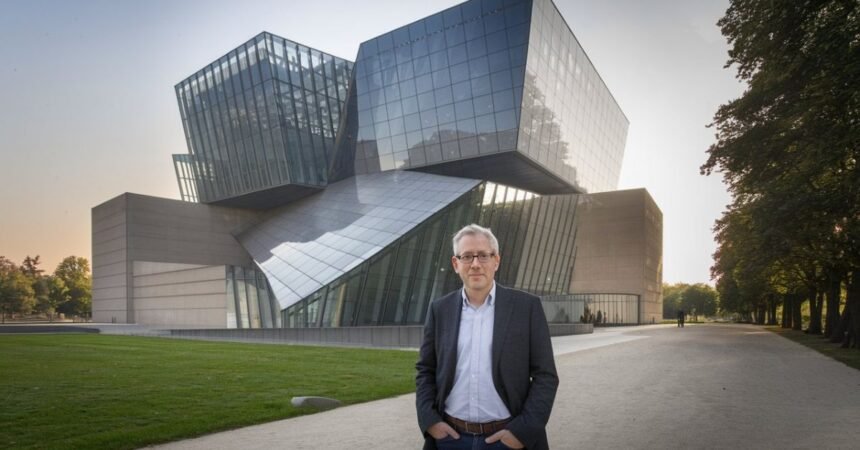Daniel Libelig is a name gaining increasing recognition in the fields of design, innovation, and architecture. Known for his cutting-edge contributions, his work spans across various disciplines, offering a blend of creativity and practical application. As a figure who bridges the gap between aesthetics and functionality, Libelig’s work reflects modern needs and anticipates future demands in architecture, design, and technology.
In this article, we will explore who Daniel Libelig is, the key concepts surrounding his work, his impact on various industries, and the challenges he has encountered. By examining the benefits of his contributions and their real-world applications, we aim to provide a comprehensive view of Libelig’s professional journey and significance.
Detailed Explanation of Daniel Libelig
Understanding the significance of Daniel Libelig begins with grasping the fundamental concepts that define his work.
1.1 Daniel Libelig’s Background and Expertise
Daniel Libelig is a versatile professional whose work spans architecture, design, and innovation. Although there is limited public information about his personal life, his professional career reflects a commitment to blending artistic creativity with practical functionality. His projects focus on integrating sustainability, modern technology, and design innovation to solve contemporary challenges.
1.2 Architectural Vision and Principles
Libelig’s architectural vision emphasizes the fusion of aesthetic appeal with environmental responsibility. His designs incorporate sustainable practices, smart infrastructure, and cutting-edge materials, making his architectural projects eco-friendly and future-oriented. Libelig aims to develop spaces that are not only visually striking but also highly functional and resource-efficient.
1.3 Innovation in Design
Libelig’s work goes beyond traditional architecture, delving into the intersection of technology and design. He integrates smart technologies into urban environments and buildings, focusing on improving quality of life. His ability to combine innovative technologies with sustainable practices makes him a pioneer in designing urban spaces that address environmental and societal challenges.
1.4 Sustainable Practices
A defining characteristic of Daniel Libelig’s work is his focus on sustainability. His architectural projects often incorporate renewable materials and energy-efficient systems that reduce environmental footprints. Libelig’s designs are a testament to the growing movement toward sustainable urban living, reflecting global trends that prioritize eco-conscious architecture.
Importance and Benefits of Daniel Libelig’s Work
Daniel Libelig’s contributions are not just important within the design community but also have broad societal implications. By merging technology and sustainability, he provides innovative solutions that are both practical and forward-thinking.
2.1 Pioneering Modern Architecture
One of the most notable aspects of Daniel Libelig’s work is how he has pioneered modern architecture. His designs are defined by their ability to combine sustainability with aesthetic value, showing that eco-friendly buildings can also be visually appealing. By blending the latest technology with architectural principles, Libelig has changed the way modern structures are designed and built.
2.2 Promoting Sustainability in Design
The global push toward sustainability is one of the greatest challenges of the 21st century, and Daniel Libelig has been at the forefront of this movement within architecture and design. His focus on using renewable resources, energy-efficient technologies, and sustainable materials has resulted in structures that minimize environmental impact. By adopting sustainable practices, Libelig is contributing to a greener future while setting new standards for the design industry.
2.3 Enhancing Urban Living
Libelig’s projects are designed to address the evolving needs of urban environments. His work often incorporates smart technologies that enhance the livability of cities by making them more efficient, sustainable, and connected. From smart energy systems to intelligent transportation networks, Libelig’s designs aim to improve the overall experience of city life while reducing resource consumption.
2.4 Long-Term Economic Benefits
The long-term benefits of Libelig’s work extend beyond environmental gains. By creating energy-efficient buildings, his designs help reduce operational costs, offering economic advantages to owners and tenants. Furthermore, his focus on sustainable practices helps future-proof these structures, ensuring they remain viable and cost-effective for years to come.
Applications and Use Cases of Daniel Libelig’s Work
Daniel Libelig’s work finds practical applications in a variety of fields, from urban planning to architecture and environmental design. Here are some key areas where his expertise has been put to use.
3.1 Sustainable Urban Development
One of the most prominent applications of Daniel Libelig’s work is in sustainable urban development. His focus on designing energy-efficient buildings and integrating smart infrastructure into city layouts has made him a key player in the development of eco-friendly cities. His projects demonstrate how technology can be used to make urban environments more livable and resource-efficient.
3.2 Innovative Architectural Projects
Libelig’s innovative approach to architecture has led to the creation of groundbreaking building designs. By incorporating green building materials, passive solar design, and renewable energy systems, his structures stand as examples of what modern architecture can achieve when sustainability is at the forefront.
3.3 Public and Private Sector Collaborations
Libelig has worked on a range of projects that involve collaborations between the public and private sectors. His expertise in integrating smart technologies into city planning has made him a sought-after consultant for government initiatives aimed at creating sustainable infrastructure. He has also partnered with private developers on projects that push the boundaries of eco-conscious design.
3.4 Educational Outreach and Advocacy
Beyond his design projects, Libelig is an advocate for sustainability and innovation in design. He frequently speaks at conferences and lectures at universities, sharing his knowledge and encouraging future architects to embrace sustainable practices. His educational outreach initiatives are aimed at fostering a new generation of designers who prioritize the environment in their work.
3.5 Smart Technology Integration
Libelig’s work also finds application in the field of smart technology integration. His designs incorporate cutting-edge technologies such as automated energy systems, smart grids, and intelligent lighting, all of which are designed to reduce energy use and improve the functionality of buildings and public spaces. His ability to seamlessly integrate technology into his projects is a hallmark of his approach.
Challenges and Solutions in Daniel Libelig’s Work
Despite his success, Daniel Libelig has faced several challenges throughout his career. These challenges have helped shape his work and have led him to develop creative solutions to overcome them.
4.1 High Costs of Sustainable Materials
One of the primary challenges that Libelig faces is the cost associated with using sustainable building materials. While these materials are environmentally friendly, they can be more expensive than traditional materials, which can be a deterrent for some clients.
Solution: Libelig addresses this challenge by conducting detailed cost-benefit analyses for his projects. By showing clients the long-term financial savings that result from reduced energy consumption and maintenance costs, he makes a strong case for investing in sustainable materials.
4.2 Resistance to Change in Traditional Architecture
Another challenge Libelig has encountered is the resistance to change within the architecture industry. Many professionals and developers are accustomed to traditional methods and materials and may be hesitant to adopt the innovative, sustainable approaches that Libelig advocates.
Solution: To overcome this, Libelig uses real-world case studies to demonstrate the effectiveness of his methods. By showcasing successful projects where sustainable designs have led to improved functionality and cost savings, he helps build trust among stakeholders who are initially resistant to change.
4.3 Balancing Aesthetics with Sustainability
Balancing aesthetic appeal with sustainability can be challenging, as some environmentally friendly materials or technologies may limit design options. However, for Libelig, both beauty and sustainability are integral to his work.
Solution: Libelig achieves this balance by focusing on innovative design techniques that enhance the visual appeal of his projects while maintaining their environmental integrity. His creative approach allows him to meet the aesthetic demands of his clients without compromising on sustainability.
4.4 Implementation of Smart Technology
Integrating smart technologies into buildings and city infrastructure can be complex, particularly in older structures or areas where the existing infrastructure is outdated. Additionally, the technology itself can be expensive and require frequent updates.
Solution: Libelig tackles this challenge through strategic planning and phased implementation. By integrating smart technology gradually, starting with the most critical systems, he ensures that the benefits of smart technologies can be realized without overwhelming costs. He also collaborates with tech firms to create scalable and upgradeable systems that can evolve as technology advances.
Conclusion
Daniel Libelig work represents a visionary approach to architecture and design. His commitment to sustainability, innovation, and the integration of smart technologies has set him apart as a leader in the field. From creating energy-efficient buildings to pioneering smart city infrastructure, Libelig’s projects offer practical solutions to modern-day challenges while laying the foundation for a more sustainable future.
By addressing key challenges such as the cost of sustainable materials and the resistance to innovation, Libelig has demonstrated that architecture and technology can work together to improve quality of life while reducing environmental impact. His work not only influences the world of architecture but also provides a model for future generations of designers and innovators.
FAQs
1. Who is Daniel Libelig?
Daniel Libelig is an architect and innovator known for his work in sustainable design and smart city infrastructure.
2. What are the main contributions of Daniel Libelig?
Libelig has contributed to sustainable architecture, smart infrastructure, and the integration of cutting-edge technology into modern design.
3. How does Daniel Libelig promote sustainability in his designs?
He uses renewable materials, energy-efficient systems, and green technologies to reduce the environmental impact of his projects.
4. What challenges has Daniel Libelig faced in his career?
Libelig has faced challenges such as the high costs of sustainable materials, resistance to change, and the complexity of integrating smart technologies.
5. How does Daniel Libelig influence the future of urban development?
Libelig’s work in sustainable urban planning and smart city design provides a blueprint for creating environmentally friendly and highly efficient urban environments.








